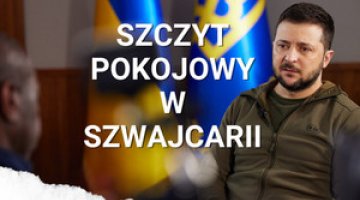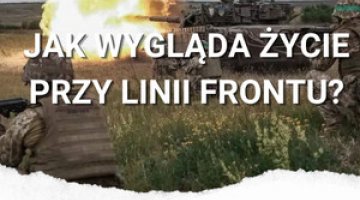Ukraine’s political parties at the start of the election campaign
In the early parliamentary elections in Ukraine on 26 October, over 20 groups will participate, but only eight or nine of them will count. According to polls, the Petro Poroshenko Bloc (a new group) and the Radical Party of Oleh Lashko (a previously marginal group) have a clear lead. Of the parties present in the previous parliament, the Party of Regions will not take part in the elections, and nor will those of UDAR, whose candidates have joined the list of the Poroshenko Bloc. As for Batkivshchina, after the split between Yulia Tymoshenko and Arseniy Yatsenyuk, it will have to fight just for a place in parliament, and not – as previously – for outright victory. The elections are being held according to a mixed ordination: half the deputies in the elections will be chosen proportionally to the national lists, and the other half in 226 single-member constituencies. The Ukrainian electorate is deeply divided into supporters of pro-European and pro-Russian options; the latter are clearly weakening, in connection with the events in the east.
The elections will be held in a very tense atmosphere, and the outcome will largely depend on further developments in the Donbas (especially on whether the truce called on 5 September continues to hold). The proposals to regulate the situation in the region by making major concessions, as provided for by a law passed on 16 September, have been met with objections by a large part of society, and the law itself will be used as propaganda by opponents of President Poroshenko and his party. In the new parliament, we may expect that pro-European forces will have a decisive advantage, and that a coalition will be created around President Poroshenko, who will be able to form a government. However, it is unlikely that there will be a sufficient majority to revise the constitution, without which radical reform of Ukraine’s political system will not be possible.
The pre-election distribution of forces
Nine major parties will take part in the elections (see detailed in the Appendix), as will several marginal groups. Of the five parties represented in the current parliament, only three are running for re-election (Batkivshchyna, Svoboda and the communists). The UDAR party has withdrawn from independent participation in the elections; its leader Vitaliy Klitschko and many other politicians have joined the list of the Poroshenko Bloc. The Party of Regions, which virtually disintegrated after losing power, has also withdrawn, and support for it ranges from 2 to 3%.
As is clear from surveys carried out in early September, the 5% electoral threshold in the proportional elections should be crossed by the Poroshenko Bloc, the Radical Party (these parties are the clear leaders), Civic Position and Batkivshchyna; most likely also the People’s Front, which was formed at the beginning of September, and less likely Svoboda and Strong Ukraine. The chances of the communists and the Opposition Bloc are small. In the single-member constituencies, above all the candidates of the Poroshenko Bloc, Strong Ukraine, the People's Front and Batkivshchyna can count on victory. However, these are preliminary evaluations, since none of the previous surveys reflected the final list of candidates; the election campaign has just begun, and further developments in the Donetsk and Lugansk oblasts and the associated changes in social attitudes will have a huge influence on the outcome of the elections.
In constituencies controlled by separatist and Russian forces, as well as Crimea, the elections will not take place. It is possible that additional electoral commissions will be organised in the adjacent districts for the residents of ‘occupied territories’. In contrast, the majority elections in these areas will be held after the restoration of their sovereign power to Kyiv. Until then, the parliament will operate in a state of partial completion; 12 seats from Crimea and Sevastopol, and 20-22 from the Donetsk and Lugansk oblasts, will remain vacant, as elections will be held in some of the 32 districts in these regions (those under the control of Ukrainian forces).
Nevertheless it can be expected that the new parliament will see a stable pro-presidential majority (the Poroshenko Bloc with candidates from UDAR and the People’s Front, as well as a large group of single-mandate deputies), which in certain cases will be able to count on the support of Civic Position, Batkivshchyna, Svoboda, and even the Radical Party, and from Strong Ukraine in other cases. On the other hand this will probably not be a qualified majority which would allow amendment of the constitution, and so changes to the constitution will be only possible if far-reaching compromises can be agreed upon.
Two electoral battles
The Ukrainian electorate today is divided into two large groups: supporters of the pro-European and the pro-Russian orientation. This division during wartime is so deep that the parties of one orientation cannot expect to attract supporters from the other. At the same time, the war has resulted in an increase in anti-Russian sentiments, also among that part of Ukrainian society which had previously been pro-Russian. The pro-Russian electorate will be represented by Strong Ukraine, the Civic Bloc and the communists; the other groups will compete for the pro-European electorate. Only Lashko’s radicals can play in both fields; their programme may prove attractive to the younger part of the communists’ electorate (those for whom the communists’ social demands are of key importance).
More important is the competition within the pro-European camp. Here we have a clear divide between a ‘peace party’, which favours finding a compromise solution to the conflict in the east of the country, and a ‘war party’, opting for a military solution. The first is made up of the Poroshenko Bloc and UDAR; the second, the other pro-European parties. It is difficult to say whether Prime Minister Yatsenyuk, the head of the People’s Front, actually advocates a military solution, or whether he is following tactical considerations: only by proclaiming such slogans can the Front defeat Batkivshchyna, its main rival. Nor can the political parties ignore the fact that, especially after the failure of the military in the Donbas, the electorate’s demand for war rhetoric is colossal; and the law enacted on 16 September on the specific model for local governments in parts of the Donbas and an amnesty for the separatists will be received by some of the public as capitulation, or even betrayal. On the other hand, this distribution of forces does not rule out the possibility of cooperation between the Poroshenko Bloc and the People’s Front in the new parliament. Neither party leader has criticised the other, and after the announcement that his party would run independently in the elections (after the failure of attempts to draft a joint list with the Poroshenko Bloc) Yatsenyuk proposed a formal coalition agreement to the President prior to the elections.
The Revolution of Dignity (as the Euromaidan and its consequences are defined today in Ukraine) has not brought forth a new, prominent political party of its own, although it has contributed to a significant growth in the popularity of the Radical Party and Civic Position. In contrast, many activists from the Maidan, as well as some commanders of the National Guard volunteer battalions, are now heading the lists of all the pro-European parties.
Appendix
The main political parties participating in the parliamentary elections in Ukraine
The All-Ukrainian Batkivshchyna (Fatherland) Association was founded in 1999, and has been led since the beginning by Yulia Tymoshenko. Until September 2014 it was one of the principal political parties of Ukraine, but since the split its potential has been difficult to determine. Its programme is centre-right, pro-European, with a high degree of populism. It favours the use of force to resolve the conflict in the Donbas.
The Civic Position Political Party (Anatoliy Hrytsenko) (a.k.a the All-Ukrainian Civic Organisation Civic Position) was founded in 2005, originally under the name Strong Ukraine; it has had its current name and leader (Anatoliy Hrytsenko) since 2010. Its programme is conservative, pro-European, anti-Russian. It is a marginal party, poorly organised, whose unexpected popularity results from Hrytsenko’s activity during the Revolution of Dignity. It advocates the use of force to resolve the conflict in the Donbas.
The Communist Party of Ukraine was founded in 1993 (after the lifting of the ban on the activities of communist parties), relying on continuity with the Soviet CPU since 1918. From the beginning it has been led by Petro Symonenko. Its programme is Communist, pro-Russian. Together with the Radical Party it is today the only party of the Ukrainian left. It effectively supports the separatist rebellion in the Donbas.
The Oleh Lashko Radical Party was founded in 2010 as the Ukrainian Radical-Democratic Party, and has had its present name and leadership since 2011. Its programme is liberal-nationalist, pro-European, populist. It is a typical one-man party, centred around Oleh Lashko; its real organisational potential remains a mystery. It favours the use of force to resolve the conflict in the Donbas.
The Opposition Bloc was founded in September 2014 by the merger of six marginal groups (at the last minute the Party of Regions decided not to join, for reasons yet unclear). This enigmatic group is probably controlled by Serhiy Lovochkin, the former Head of Yanukovych’s presidential administration. Its programme is social-liberal and pro-Russian. The party advocates a peaceful solution to the conflict in the Donbas.
The People’s Front was formed in March 2014, and since September has been under the direction of Arseniy Yatsenyuk and Oleksandr Turchynov. Its programme is liberal-democratic, pro-European. It is a party in the process of becoming – mainly by absorbing people and structures from Batkivshchyna. Its main advantage is that it is headed by the current prime minister and speaker of parliament. It has declared in favour, albeit ambiguously, for the use of force to resolve the conflict in the Donbas.
The Petro Poroshenko Bloc was founded in 2001 as the Solidarity Party, and has had its present name since August 2014. It is formally led by Yuri Lutsenko, but effectively by Poroshenko, who created the party. Its programme is Christian-liberal, pro-European. The adoption of a common list of candidates with the UDAR party enables it to use that party’s large-scale structures, which the Poroshenko Bloc itself lacks. It favours a peaceful solution to the conflict in the Donbas.
The Serhiy Tihipko Strong Ukraine party was founded in 1999 under the name of the Labour Party of Ukraine; it has had its current name and leader (Serhiy Tihipko) since 2009. Between 2012 and 2014 it disbanded (its leader and members entered the Party of Regions), but was revived in August 2014. Its programme is liberal, pro-Russian. It favours a peaceful solution to the conflict in the Donbas.
The All-Ukrainian Svoboda (Freedom) Association was founded in 1991 as the Ukrainian Social-Nationalist Party, and has used its present name since 2004. Its leader is Oleh Tiahnybok. Its programme is right-wing, radical, nationalist. It favours the use of force to resolve the conflict in the Donbas.




